The fuzzy leaves of the Southwestern-native Lindheimer’s Senna (Senna lindheimeriana) have well earned it the nickname “Puppy Dog Ears.”
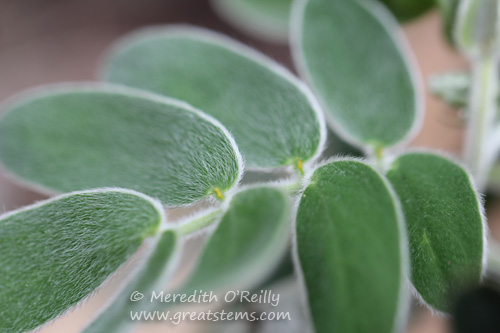 Its softness isn’t just alluring to the touch — the velvety hairs and light blue-green color catch the light so subtly that the leaves almost beckon you to reach out with your fingertips. In fact, it can be so distracting that you almost have to refocus your eyes, as if viewing a stereogram, to look beyond the leaves to see what might actually be munching on them.
Its softness isn’t just alluring to the touch — the velvety hairs and light blue-green color catch the light so subtly that the leaves almost beckon you to reach out with your fingertips. In fact, it can be so distracting that you almost have to refocus your eyes, as if viewing a stereogram, to look beyond the leaves to see what might actually be munching on them.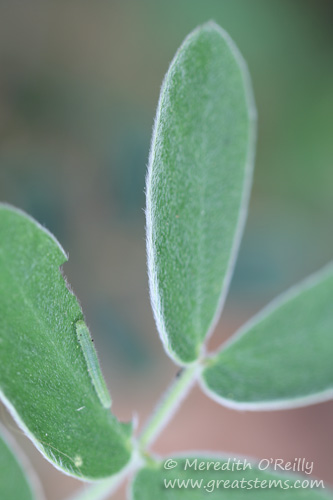
Take, for example, the Sleepy Orange caterpillar, who uses Lindheimer’s Senna as a host plant.
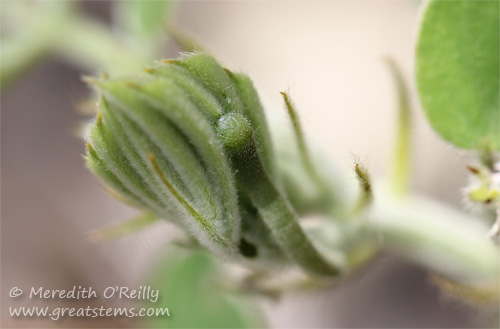
Like the senna’s leaves, the caterpillar appears light green and fuzzy. 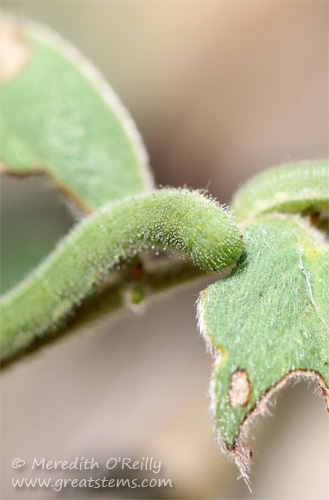
This just might help protect it from would-be predators.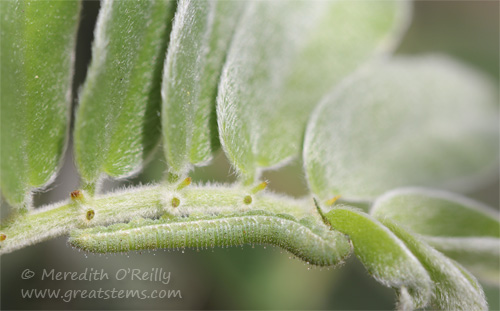
Often I found the caterpillars aligned with the leaf petioles.
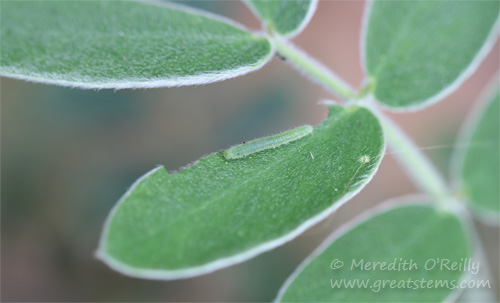 Other times, I found them along leaf edges, almost blending in with the light margins of the leaves.
Other times, I found them along leaf edges, almost blending in with the light margins of the leaves.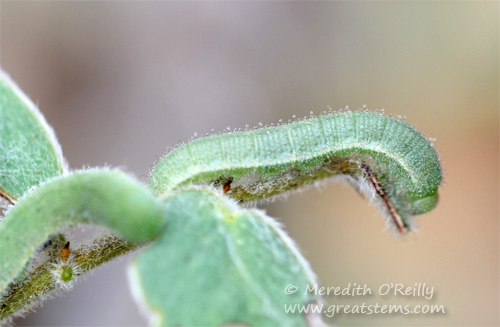
It might not be the most unusual camouflage out there, but I found it pretty remarkable. Since these photos are close-ups, the caterpillars stand out more than they did on the actual plants — I really had to look for them! I can’t speak as to how effectively Sleepy Orange caterpillars blend with the leaves of other Cassia species, but I’m certainly impressed with their ability to hide on the fuzzy sennas in my backyard.
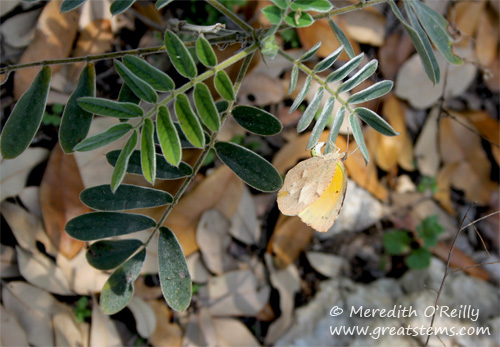
Here is a Sleepy Orange adult, laying eggs on one of my sennas just a few weeks ago. Some of the caterpillars I’m showing might very well be her offspring.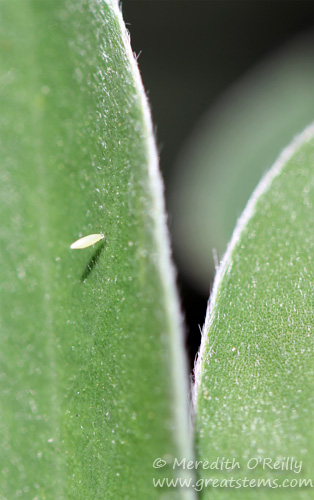
Another female has recently laid her eggs. While some butterflies lay round eggs, the Sleepy Orange eggs are oval-shaped.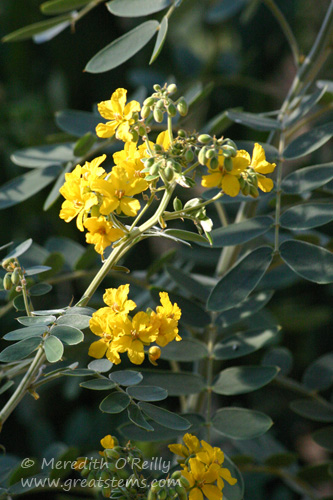
Later this year, the senna will produce gorgeous yellow blooms and soon after that many seeds contained in pods. It’s a lovely plant, supporting countless insects and birds and other critters. Yep, you guessed it, it’s a favorite of mine.
Even in the closeups, I had to do a quick double take on a couple of those photos! Capturing the female laying eggs (and the egg itself) was particularly helpful.
I need to look and see which Sennas are appropriate for our area – they sure are beautiful plants.
There are many possibilities, Cynthia — look for Sennas, Cassias, and even Partridge Pea — all in the pea family. Good luck!
The plant reminds me of non-native lamb’s ear with its fuzzy soft leaves. I have partridge pea growing in my garden but the caterpillars don’t camo quite as well on that plant. Great shot of the egg!
It would be interesting to do a study about the survivability of caterpillars on Lindheimer’s Senna as compared to other plants. But it would be hard to witness the process, at the same time! For all I know, birds and lizards have no problem seeing the caterpillars even on my fuzzy senna. But I haven’t seen mass numbers disappearing yet, either. It’s a thing that makes you say, “Hmmmmmm.”
I’ll have to add this plant to the list of plants potentially for my parents – do you know if the senna is deer resistant (I figure it might be because of the fuzzy leaves)?
I don’t think Lindheimer’s Senna would be a deer’s first choice — you are right about the texture being a deterrent. Should you hold me to that? Nope! Deer will try all sorts of foods, particularly in drought. But this would be one I’d go for.
Amazing shots! Sleepy Orange is such a cool name, too. Would say “Who knew?”, but YOU obviously did. Thanks once again for sharing with all of us.
I have no idea how Sleepy Orange got its name, though. Sometimes it’s not very orange — could that be it?